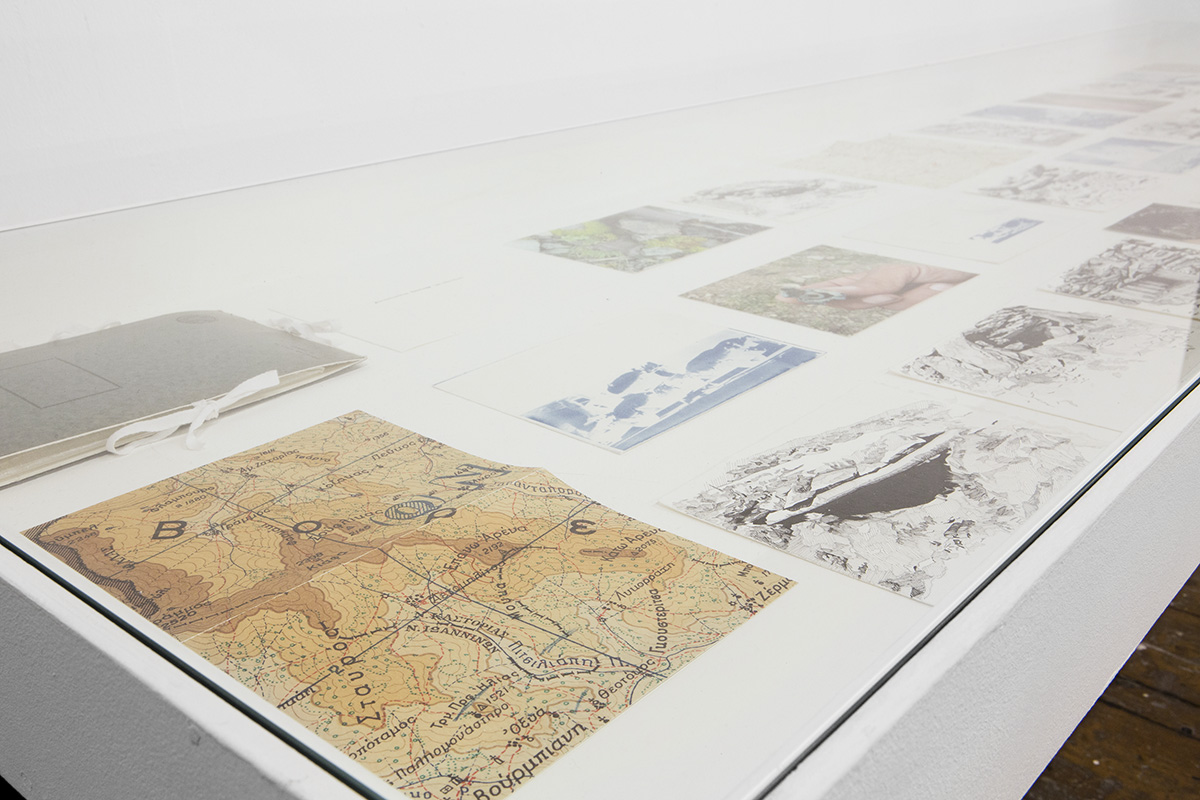Eirene Efstathiou
How do artists today talk aboutthe present? How do they engage with diverse social and political problems? How do they read the past? A large number of artists today, acting as archivists, archeologists or editors, have used different methods of searching, selecting and appropriating existing images and documents. By re-visualizing, re-arranging and re-editing found material, they attempt to enquire about its status in order to create works that unsettle established narratives and imagine alternative readings.
The exhibition When the Present is History explores the ways in which artists from different backgrounds and geographies have appropriated and reconfigured historical accounts, contributing to wider dialogues on history, remembrance, forgetfulness and collective memory. The artists’ starting point is often rooted in their country’s histories in order to speak about broader social, political and economic issues and propose new viewpoints and interpretations. By looking to past, recent and contemporary documents, these artists choose to employ found photographs, images, texts, objects, sound, film and TV footage, in order to narrate anew events that are interlinked with our quickly evolving present conditions.
The title of the exhibition refers on the one hand to the present’s interrelation with the past, but also to the way history is always present and continues to influence and shape the way we perceive our world now. By looking at different yet interlinked histories through the works of 17 artists from Turkey, Italy, Greece, Lebanon, Germany, France, Czech Republic, Serbia, Lithuania, Holland, Belgium and the US, the exhibition presents new, existing or revisited installations, sound pieces, films and videos, performances as well as photo-based works, prints and paintings that expand on the first and second floor of Depo’s exhibition space creating direct correlations between them as well as open narratives.
The exhibition brings together major and minor histories, well known or lesser known past events with contemporary issues through research-based works of international visual artists. How to re-interpret and re-tell history? How to use and read historical images?What is the power of the still and moving documentary image? The exhibition presents different ways in which contemporary artists have made use of archival material in order to imbue it with a new sense of subjectivity, rediscover a sense of contemporaneity and speak about the present.
Contemporary visual archival practices do not aim at historical precision. When we are dealing with artistic narratives ambiguities, subjectivities, and speculations can all be present. Archival research that has been adopted by many visual artists in recent years offers new aesthetic and historiographic viewpoints and sheds light on issues related to history, politics, and society, but does not necessarily seek truths. Artists reflect on the past, reenact historical events, recall obsolete records of history and use the archive as a discursive process. The exhibition When the Present is History surveys the works of art concerned with historical records that cross over not only with memory and the past, but also the present experience. These artists urge us to remember and uncover hidden stories by excavating and unearthing, but also revitalizing and reconstructing.
Curated by Daphne Vitali.
Artists: Zbyněk Baladrán, Eric Baudelaire, Ege Berensel, Rossella Biscotti, Banu Cennetoğlu, Barış Doğrusöz, Eirene Efstathiou, Alessandra Ferrini, Johan Grimonprez, Ivan Grubanov, Yota Ioannidou, Deimantas Narkevičius, Ines Schaber and Avery F. Gordon, Rayyane Τabet, Stefanos Tsivopoulos, Vangelis Vlahos, Malastrada film (M. H. Bertino, D. Castelli and A. Gagliardo)
Read more about Eirene Efstathiou
